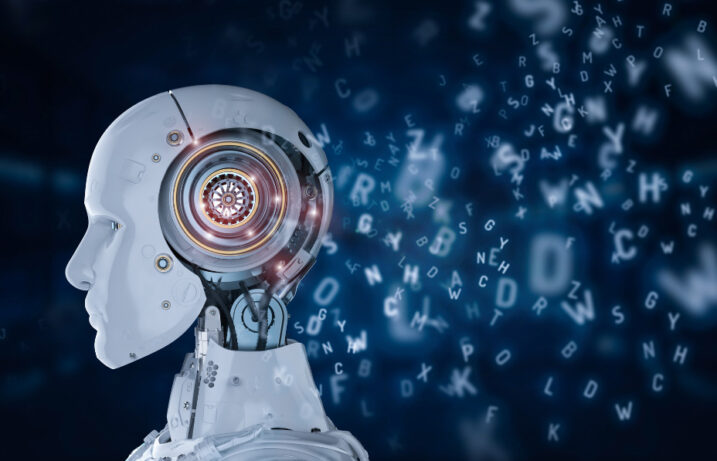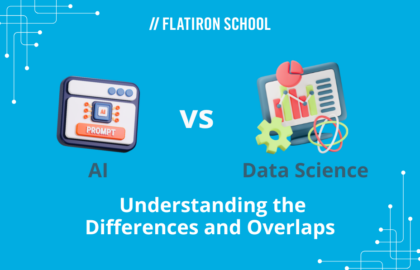As the fields of data science, artificial intelligence (AI), and machine learning continue to evolve, understanding the distinction between deep learning and machine learning is more important than ever. These two disciplines are at the forefront of technological innovation, powering everything from self-driving cars to personalized recommendations on streaming platforms.
In this article, we’ll explore the similarities and differences between deep learning and machine learning, their applications, and how they tie back to the broader field of AI.
What Is Artificial Intelligence (AI)?
Artificial Intelligence (AI) is the science of creating machines that can think, learn, and act like humans. It encompasses a broad range of technologies, with the core goal of enabling machines to analyze datasets, make decisions, and perform tasks with minimal human intervention.
AI powers robotic process automation, natural language processing (NLP), and computer vision, transforming industries like healthcare, finance, and transportation. For example, chatbots use AI to provide real-time customer support, while generative AI creates new content, such as text, images, or music.
What Is Machine Learning?
Machine Learning (ML) is a subset of artificial intelligence that focuses on enabling computers to learn from structured data without being explicitly programmed. By analyzing training data, ML models can identify complex patterns, make predictions, and improve over time.
Types of Machine Learning
- Supervised Learning: Requires labeled data to train models. For example, teaching a model to classify emails as spam or not spam.
- Unsupervised Learning: Works with unstructured data to find hidden patterns, such as customer segmentation in marketing.
- Reinforcement Learning: Uses a reward-based system to train models, often applied in robotics and gaming.
What Is Deep Learning?
Deep Learning (DL) is a specialized subset of machine learning that uses artificial neural networks (ANNs) modeled after the human brain. These deep neural networks consist of multiple hidden layers, allowing them to process and analyze unstructured data like images, videos, and audio.
Deep learning excels in tasks that require high levels of abstraction, such as speech recognition, image recognition, and natural language processing.
Types of Deep Learning Algorithms
- Convolutional Neural Networks (CNNs): Designed for image and video analysis, CNNs are widely used in computer vision applications like facial recognition and medical imaging.
- Recurrent Neural Networks (RNNs): Ideal for sequential data, RNNs are commonly used in time series analysis and sentiment analysis.
- Generative Adversarial Networks (GANs): Used to generate new data, GANs are popular in generative AI applications like creating realistic images or videos.
Key Differences Between Machine Learning and Deep Learning
While both ML and DL are subsets of artificial intelligence, they differ in several key ways:
- Human Intervention: ML models require more human intervention for tasks like feature engineering, while DL models can learn and improve with minimal oversight.
- Data Requirements: DL models need large datasets to perform effectively, whereas ML models can work with smaller datasets.
- Hardware: DL models require powerful hardware like GPUs to handle complex computations, while ML models can often run on standard computers.
- Applications: ML is used for tasks like fraud detection and recommendation systems, while DL powers advanced applications like self-driving cars and autonomous drones.
Applications of Machine Learning and Deep Learning
Machine Learning Applications
- Fraud Detection: Banks use ML algorithms like decision trees and random forests to identify suspicious transactions in real time.
- Recommendation Systems: Platforms like Netflix and Amazon rely on ML to suggest content and products.
- Predictive Maintenance: ML helps industries predict equipment failures before they occur, optimizing operations.
Deep Learning Applications
- Autonomous Vehicles: DL enables self-driving cars to interpret their surroundings and make decisions.
- Medical Diagnostics: CNNs are used to analyze medical images for conditions like cancer.
- Voice Assistants: RNNs power virtual assistants like Siri and Alexa, enabling them to understand and respond to user queries.
Careers in Machine Learning and Deep Learning
The demand for professionals skilled in ML and DL continues to grow, with competitive salaries and opportunities across industries.
Key Roles
- Data Scientist: Designs and implements machine learning models to solve business problems.
- Machine Learning Engineer: Builds and deploys ML models in production environments.
- Computer Vision Engineer: Focuses on image and video analysis using deep learning algorithms.
How to Get Started in Machine Learning and Deep Learning
1. Learn the Fundamentals
Start with the basics of data science, including:
- Programming Languages: Python, SQL.
- ML Algorithms: Linear regression, classification, and clustering.
- Data Points and Feature Extraction: Understand how to preprocess and analyze data.
2. Gain Hands-On Experience
Work on real-world projects that involve:
- Building a recommendation system.
- Training a CNN for image recognition.
- Developing an RNN for time series analysis.
3. Enroll in a Bootcamp
Programs like Flatiron School’s Data Science and Advanced AI & Machine Learning Bootcamp offer comprehensive training in ML, DL, and natural language processing, along with career support to help you land your first job.
The Future of Machine Learning and Deep Learning
As we move further into the digital age, the applications of ML and DL will only expand. From autonomous robots to personalized healthcare, these technologies are set to revolutionize the way we live and work.
If you’re ready to start your journey in this exciting field, explore our programs and apply today. With the right skills and training, you can be at the forefront of innovation in 2025 and beyond.
Get Started Today
Ready to dive into the world of machine learning and deep learning? Enroll in Flatiron School’s programs to gain the skills and experience you need to succeed in this rapidly evolving field.
Frequently Asked Questions
How are machine learning and deep learning related?
Machine learning (ML) and deep learning (DL) are both subsets of artificial intelligence (AI). Deep learning is a specialized branch of machine learning that uses artificial neural networks to mimic the way the human brain processes information. While ML focuses on structured data and often requires manual feature engineering (e.g., selecting which data attributes to analyze), DL automates this process by learning features directly from raw data. This makes DL particularly powerful for tasks involving unstructured data, such as images, audio, and text.
Which is better for beginners: machine learning or deep learning?
For beginners, starting with machine learning is often recommended. ML provides a solid foundation in understanding algorithms, data preprocessing, and model evaluation. It’s also less resource-intensive and easier to grasp conceptually. Once you’re comfortable with ML basics, you can transition to deep learning, which requires a deeper understanding of programming, mathematics (e.g., linear algebra, calculus), and working with large datasets.
What are some other real-world applications of deep learning?
Deep learning has a wide range of real-world applications across industries. One of the most common is facial recognition, where deep learning algorithms are used to identify and verify individuals in security systems, smartphones, or even social media platforms. Another major application is generative AI, where models such as Generative Adversarial Networks (GANs) are capable of creating highly realistic images, videos, and even deepfake content.
What industries benefit the most from machine learning and deep learning?
Machine learning (ML) and deep learning (DL) are transforming industries worldwide. In healthcare, they are used to predict patient outcomes, diagnose diseases, and personalize treatments. In finance, ML and DL help with fraud detection, algorithmic trading, and credit risk assessment. The retail sector benefits through personalized recommendations, inventory management, and analysis of customer behavior. Transportation leverages these technologies for autonomous vehicles, route optimization, and predictive maintenance. Finally, the entertainment industry uses ML and DL for content recommendations, video analysis, and generative AI applications in media creation.
What other career paths are available in artificial intelligence and data science?
The world of artificial intelligence and data science is broad and rich with specialization opportunities. Career paths include becoming an AI Engineer, who designs AI-powered applications and scalable systems using Python, neural networks, and advanced frameworks, or a Data Engineer, who develops robust pipelines for data collection, cleaning, and storage using tools such as SQL, AWS, or big data platforms to support business analytics. You could also pursue a role as an AI Researcher, advancing AI through innovative algorithms and contributing to open-source communities, or as an AI Ethics Specialist, ensuring the responsible use of AI and addressing stakeholders’ concerns about generative AI models. Another option is a Software Developer focused on AI, who integrates AI tools and APIs, automates tasks, and builds user-facing products enhanced by artificial intelligence.




